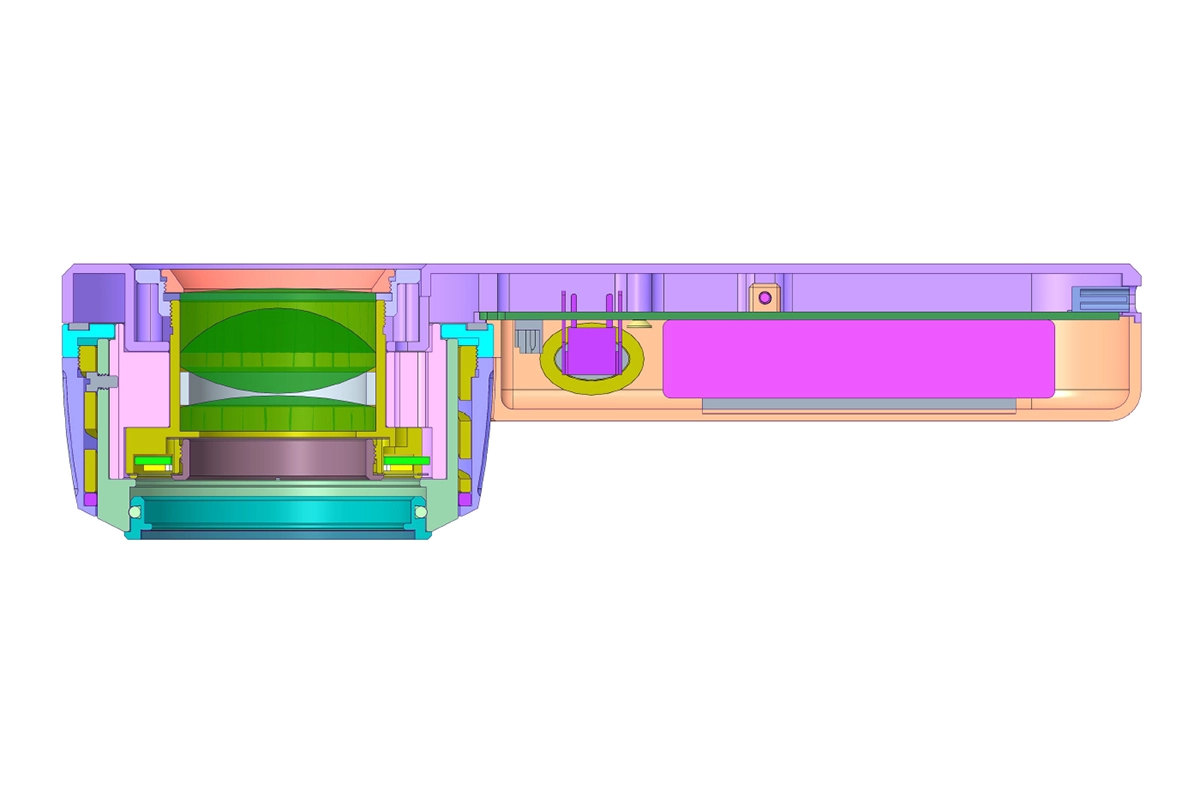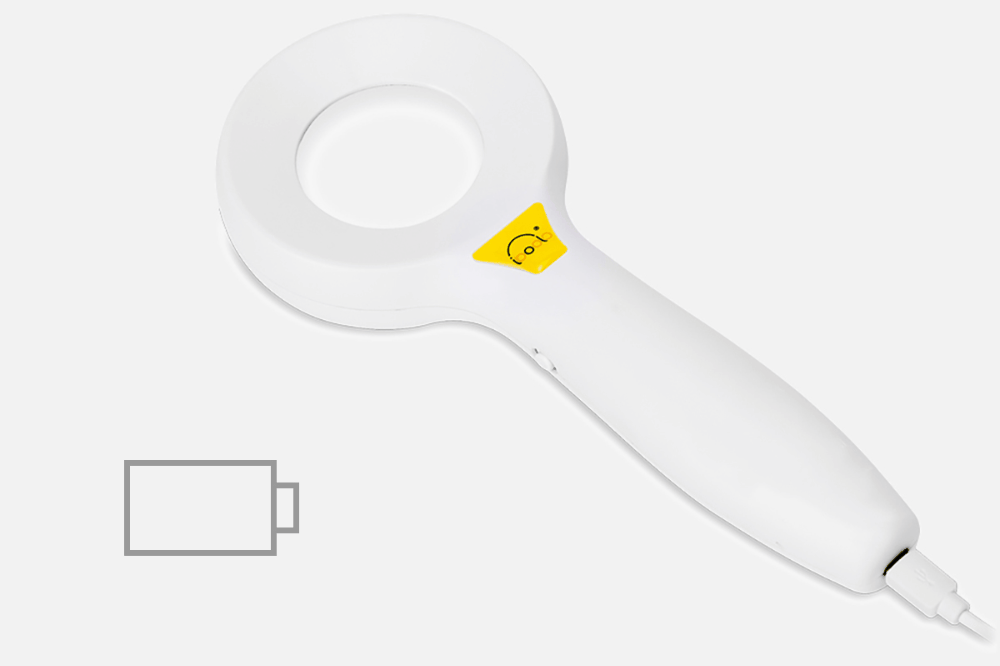365nm UV Lamp for enhanced visualization in dermatology - IBOOLO
IBOOLO 12W 365nm UV lamp delivers optimized illumination for diagnosing bacterial, and fungal infections and skin pigment disorders and enhances visualization of skin conditions like tinea capitis.
365nm UV Lamps: Illuminating the Future of Technology and Industry
In the rapidly evolving landscape of technology and industry, 365nm UV lamps have emerged as a pivotal tool, offering unique capabilities across various sectors. This article delves into the characteristics, applications, and benefits of these specialized light sources, providing valuable insights for professionals and enthusiasts alike.
Understanding 365nm UV Lamps
365nm UV lamps emit ultraviolet light at a specific wavelength of 365 nanometers. This places them in the long-wave ultraviolet (UVA) spectrum, known for its relatively lower energy but superior penetrating power compared to shorter UV wavelengths. The unique properties of 365nm UV light make it invaluable in numerous applications.
Key Applications
1. Scientific Research:
- DNA analysis and gene research
- Fluorescence microscopy
- Photochemical reactions
2. Industrial Inspection:
- Non-destructive testing (NDT)
- Weld inspection
- Printed circuit board (PCB) examination
3. Medical and Health:
- Sterilization and disinfection
- Phototherapy for certain skin conditions
- Medical device inspection
4. Art Authentication:
- Detecting forgeries
- Examining the authenticity of ancient artifacts
- Revealing hidden details in artwork
5. Specialized Lighting:
- Blacklight effects
- Stage and entertainment industry use
- Curing of UV-sensitive materials
Advantages of 365nm UV Lamps
1. Enhanced Safety: Compared to shorter UV wavelengths, 365nm UV light poses less risk to human health and materials.
2. Superior Penetration: The ability to penetrate deeper into materials makes it ideal for various inspection tasks.
3. Effective Excitation: Efficiently excites a wide range of fluorescent materials, crucial for specific lighting and detection applications.
4. Versatility: Applications span from cutting-edge scientific research to everyday industrial processes.
5. Energy Efficiency: Generally more energy-efficient than UV sources of other wavelengths.
Considerations When Choosing 365nm UV Lamps
1. Spectral Purity: Ensure the lamp truly outputs UV light at the 365nm wavelength.
2. Power Output: Select appropriate power levels based on the intended application.
3. Longevity: Consider the lifespan of different light sources, such as LEDs or mercury lamps.
4. Safety Features: Opt for products with adequate safety measures and shielding.
5. Brand Reputation: Choose reputable brands to ensure quality and after-sales support.
The Future of 365nm UV Technology
As technology advances, we can anticipate even more innovative applications for 365nm UV lamps. Emerging fields such as nanomaterials, advanced manufacturing, and biotechnology are likely to find new uses for this versatile light source.
365nm UV lamps stand at the intersection of science, industry, and innovation. Their unique properties make them indispensable in a wide array of applications, from the microscopic world of genetic research to the macroscopic realm of industrial quality control.
As we continue to push the boundaries of technology, the role of 365nm UV lamps is set to expand further. Whether you're a researcher, an industrial professional, or simply curious about cutting-edge technology, understanding the capabilities and applications of 365nm UV lamps opens up a world of possibilities.
Remember, while 365nm UV light is generally safer than shorter UV wavelengths, it's crucial to follow safety guidelines and use appropriate protective equipment when working with any UV light source. With proper use and ongoing research, 365nm UV lamps will undoubtedly continue to illuminate the path of technological progress for years to come.
Using a 365nm UV Lamp for Unique Skin Visualization
Detecting some skin conditions can be difficult under normal lighting. But ultraviolet light reveals things invisible to the naked eye. In particular, UV at 365 nanometers wavelength from a 365nm UV lamp provides unique visualization capabilities leveraging properties of skin structures. Read on to understand how a specialized 365nm UV lamp aids dermatological analysis.
What is the 365nm UV light from a 365nm UV lamp used for?
A 365nm UV lamp emitting ultraviolet light at 365 nanometer wavelength has become an important tool for enhanced visualization of bacterial, fungal, and other microbiological components associated with certain skin disorders.
When the 365nm wavelength UV light from a 365nm UV lamp excites certain substances like porphyrins inherently present in bacteria and fungi colonies, they exhibit a distinct bright fluorescence not seen under standard lighting. This signal contrasts sharply against healthy areas of skin when viewed under a 365nm UV lamp.
Doctors have long used 365nm UV lamps to better detect conditions like acne vulgaris, seborrhoeic dermatitis, erythrasma infections, and ringworm. Now affordable at-home models of 365nm UV lamps allow people to periodically self-screen problem areas between office visits for earlier concern detection.
Is 365 nm UV from a 365nm UV lamp harmful to humans?
The 365nm UV range from a 365nm UV lamp falls into the safer UV-A spectrum, unlike more damaging shorter wavelength UV-B and UV-C light. However, experts still recommend prudent exposure limits with 365nm illumination from a 365nm UV lamp just as with normal sunlight. Following device guidelines for a 365nm UV lamp to only illuminate small skin areas briefly during analysis prevents unnecessary exposure risk.
It's also advisable to wear UV-filtering glasses if examining another person's skin at length using a 365nm UV lamp. Smartphone camera sensors also typically include IR/UV filtering and aren't subject to similar eye safety constraints when taking magnified photos under the 365nm light from a 365nm UV lamp.
Is 365nm light from a 365nm UV lamp safe for eyes?
Direct, prolonged 365nm UV exposure from a 365nm UV lamp carries retinal damage risk just like staring at the sun. But brief examination periods of skin areas under a 365nm UV lamp generally do not pose any eye threat given a few feet of separation distance from the 365nm UV lamp source based on output intensity decay over distance per the inverse square law of light propagation physics.
It's still wise to avoid staring into the illumination area of a 365nm UV lamp or move very close to someone else's skin being examined under a 365nm UV lamp. Using camera magnification rather than peering closely keeps eyes comfortably out of harm's way when using a 365nm UV lamp.
Is 365nm from a 365nm UV lamp UVA or UVB?
Light spectrum wavelengths from 315nm to 400nm fall into the UVA classification, whereas UVB ranges from 280nm to 315nm. Therefore, at 365nm wavelength, emissions from 365nm UV lamps clearly qualify as UVA light. And while excessive exposure to any UV still demands caution, UVA wavelengths from a 365nm UV lamp are far less damaging than shorter wavelength UVB or UVC bands.
Modern 365nm UV lamps provide a safe method for enhanced visualization of bacterial and fungal skin components when used prudently. periodic screening with a 365nm UV lamp at home gives you unique insight into your skin's health between dermatological visits for earlier issue detection. So take advantage of 365nm UV lamp technology for proactive self-care.
Recommended reading
lentigo maligna – IBOOLO
Shenzhen Iboolo Optics Co.Ltd is a professional camera lens company, which is in the business of producing and marketing Dermatoscope, Microscope, Macro lens and Woods Lamp with 11+ years experience in China.
Reviews – IBOOLO
IBOOLO is a camera lens manufacturer based in China with more than 11+ years of experience in manufacturing, catering to a variety of requirements. We have become experts in the design and manufacture of a wide variety of Dermatoscope, Microscope, Woods Lamp and Macro lens.
Wholesale Adapter manufacturer & factory – IBOOLO
IBOOLO is a Wholesale Adapter manufacturer & factory. In the past years, IBOOLO has won high reputation for their high quality in domestic markets as well as overseas markets such as Spain, Germany, France, United Kingdom, Switzerland, etc, etc.
Dermatology UV 365nm DE-215 Woods Lamp
Dermatology UV 365nm DE-215 Woods Lamp
- 4.5 x Magnification
- 60mm Lens Diameter
- 20 LEDs (15 White, 5 UV 365nm)
- 2 Types Colour Lighting
- Automatic shutdown
- Ultra long life battery
|
Lens Diameter |
50mm |
|
Magnification |
4.5X |
|
Ultraviolet Wavelength |
365nm |
|
Radiation Intensity |
3.5 mW/cm2 |
|
Battery Capacity |
2000mAh |
|
Charging |
USB Type-C |
|
Working Time |
2-6 hours |
|
Dimensions |
240mm*100mm*34mm(L*W*H) |
What It Has
- 365nm UV Light:A Wood’s lamp has broadband light sources that emit light at wavelengths between 320nm and 400nm, with a peak at 365nm.
- 4.5X Magnification:Low distortion magnify
- 2000mAh Battery: Offering up to 6 hours long time and stable diagnosis.
In The Box
- DE-215 Woods Lamp
- USB Type-C Charging Cable
- Microfiber Cloth
- User Manual
Specs
- Lens Diameter:50mm
- Magnification:4.5X
- Ultraviolet Wavelength: 365nm
- Radiation Intensity: 3.5 mW/cm2
- Battery Capacity:2000mAh
- Charging:USBType-C
- Working Time:2-6 hours
- Dimension:240mm*100mm*34mm(L*W*H)
Clinical Applications
The Wood's lamp is used to identify the extent of pigmented or depigmented patches and to detect fluorescence. Normal healthy skin is slightly blue but shows white spots where there is thickened skin, yellow where it is oily, and purple spots where it is dehydrated. Clothing lint often shines bright white.
What Makes it Unique
Woods lamps use ultraviolet light to reveal skin abnormalities that can’t be seen with human eyes. Build with 60mm field view and no cross-infection design, this Woods lamp can be held about 10-30 cm away from the skin for detection. The examination is painless and safe.
You might also like
DE-4100 Dermatoscope
$699.00
DE-3100 Dermatoscope
$499.00
DE-400 Dermatoscope
$179.00
DE-300 Dermatoscope
$109.00
Reviews
1 review for DE-215 Woods Lamp
Only logged in customers who have purchased this product may leave a review.
Learn More
What are the Common Skin Cancers?
Skin cancer stands out as the most prevalent form of cancer globally, with millions of new diagnoses annually. Unlike many other cancers, skin cancer often presents visible signs, making early…
IBOOLO Optical Dermatoscope
An optical dermatoscope is a medical device used in dermatology to examine skin lesions. This non-invasive tool is essential for the early detection and diagnosis of various skin conditions, including…
Digital Dermatoscope Vs. Optical Dermatoscope
In the realm of dermatology, two primary tools aid professionals in examining skin lesions: digital dermatoscopes and optical dermatoscopes. A digital dermatoscope is a sophisticated device that combines traditional dermatoscopy…













































Kim Long United States
–
United States
–
Excellent product! The Wood’s lamp is incredibly effective and easy to use. It provides clear, bright UV light.